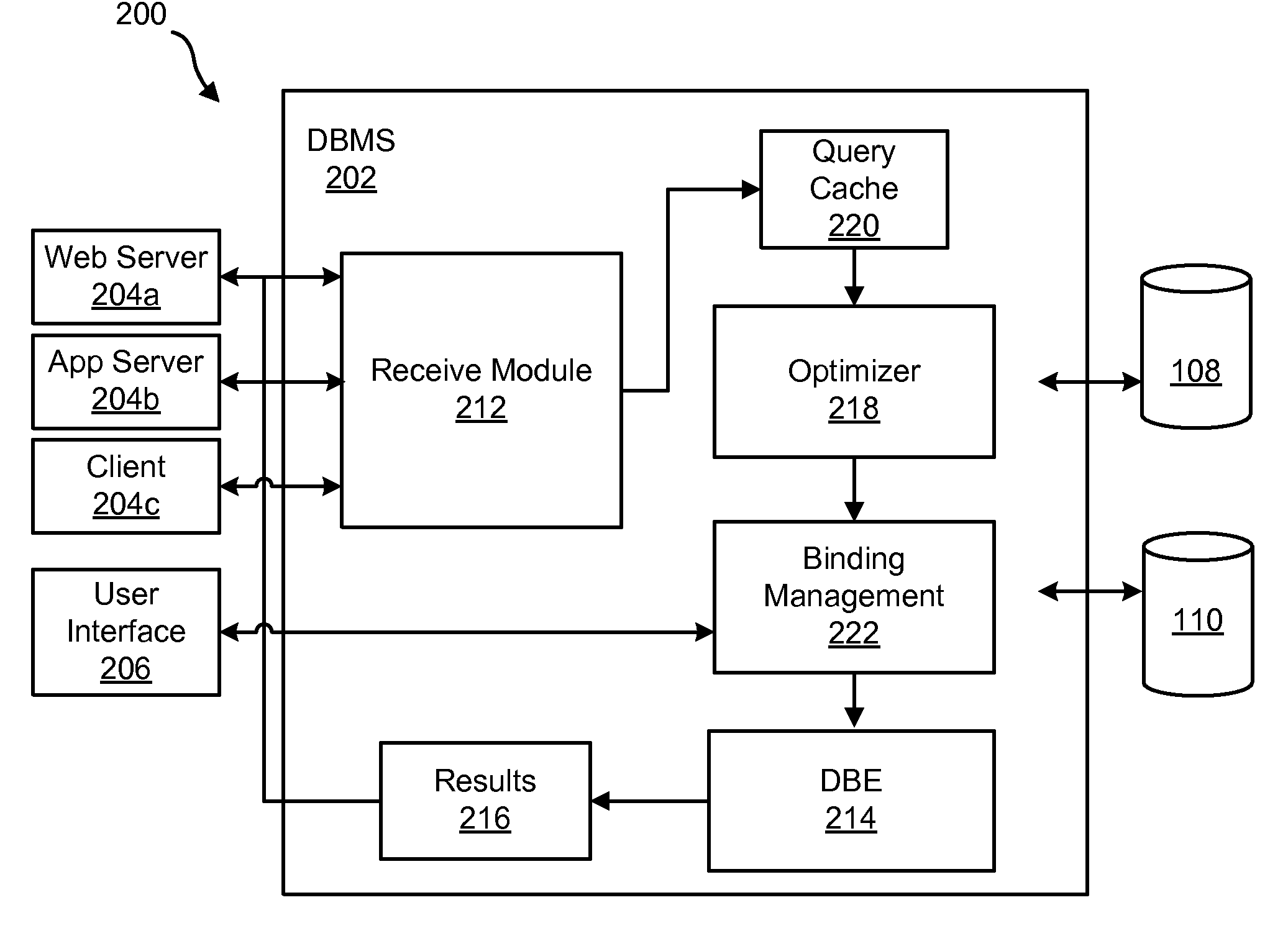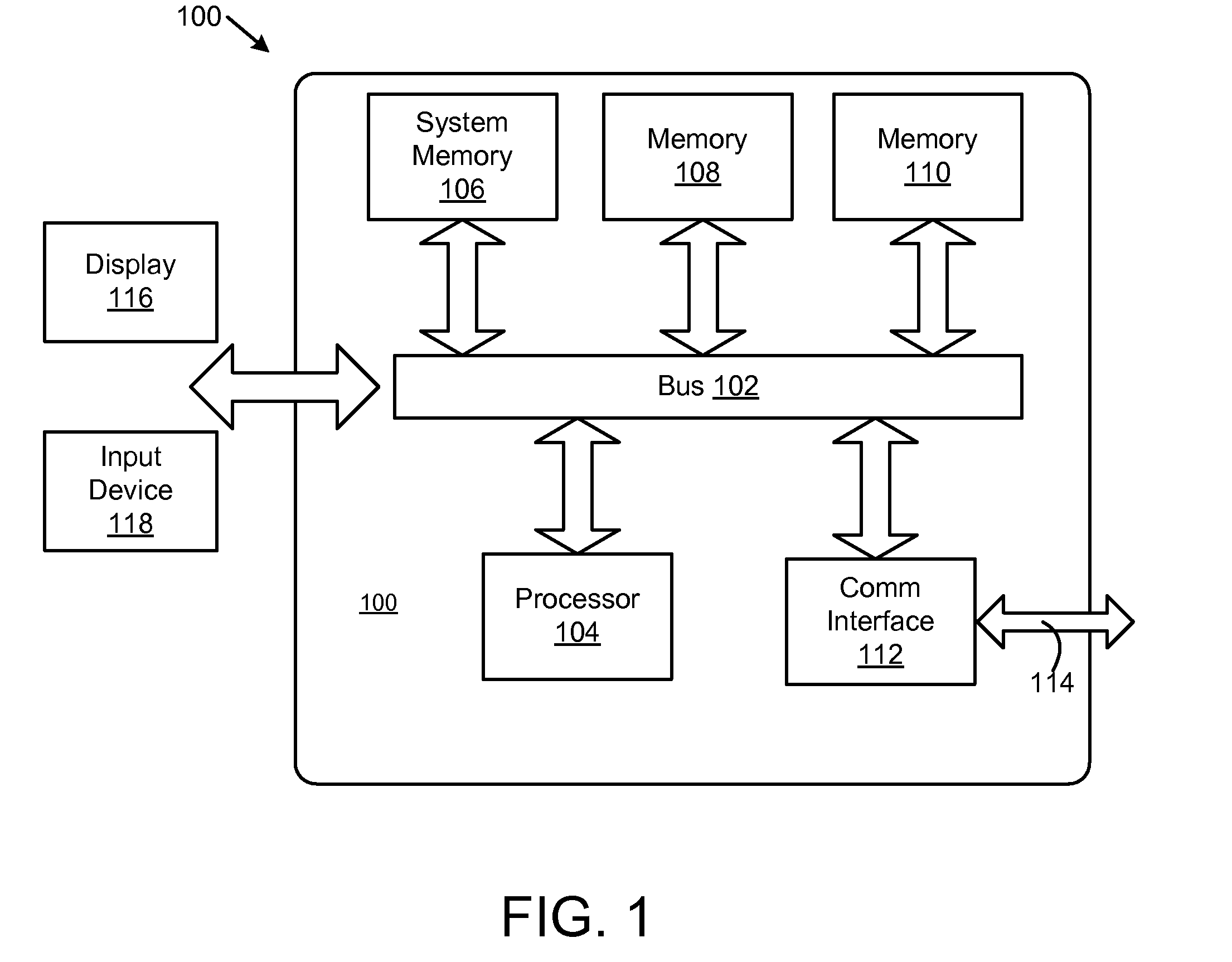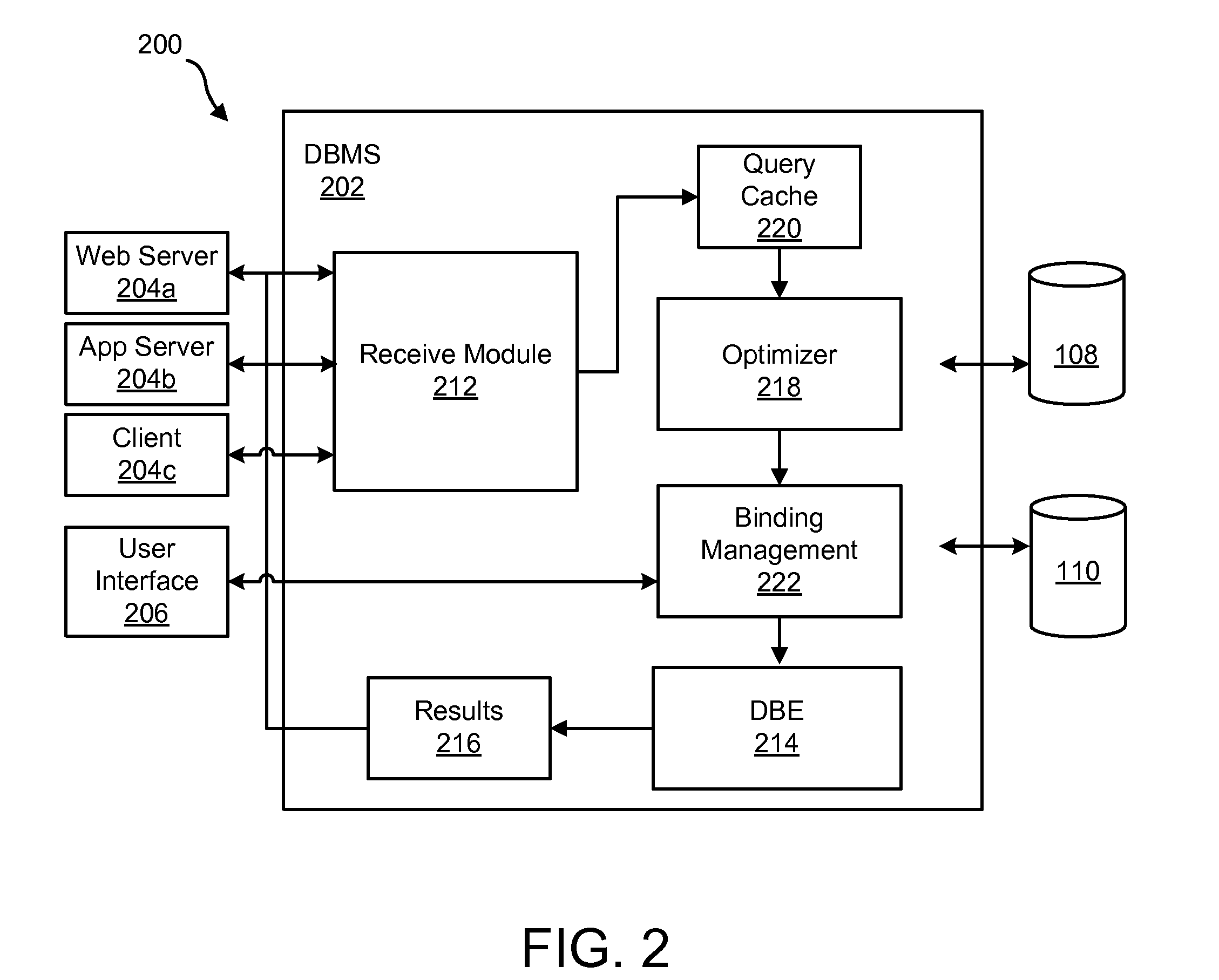Query execution plan efficiency in a database management system
a database management system and query execution plan technology, applied in the field of database management system, can solve the problems of loss of reputation, regression of qep binding with consequential reduction performance, and inability of tools and algorithms to provide 100% guarantee, etc., to achieve the effect of improving the efficiency of the query execution plan
- Summary
- Abstract
- Description
- Claims
- Application Information
AI Technical Summary
Benefits of technology
Problems solved by technology
Method used
Image
Examples
second embodiment
[0082]FIG. 3B illustrates the binding management module 222 for improved query execution plan efficiency in a database management system in accordance with the present invention. The binding management module 222 includes a QEP repository 312, a binder module 318, an acceptor module 352, a swap module 354, a statistics module 356, and an execution module 360. In this embodiment, the binding management module 222 also interfaces with a user interface 206 and receives a user input 324 from a database administrator (DBA) 326.
[0083]The QEP repository 312 is substantially described above in relation to FIG. 3A and below in relation to FIG. 4.
[0084]The acceptor module 352 is configured to impart functionality to a device, system or apparatus that causes the same to accept a user instruction 324 to bind or rebind the database query 316 to a QEP 314 in the QEP repository 312. In some embodiments, the user instruction 324 may simply comprise a user-specified date, which date maybe interprete...
embodiment 400
[0093]The hash value 402 is determined by a hash algorithm that “hashes” a dynamic or static database query 316. The hash 402 represents the database query 316 for the purposes of the QEP repository 312 in the shown embodiment 400. Hashes and hash algorithms are well-known to those of skill in the art. In the shown embodiment, the hashes 402a-b represent dynamic database queries 316, but may represent static database queries 316 in other embodiments.
[0094]The status indicator 404 indicates the status of the QEP 314 with respect to the database query 316 with which the QEP 314 is bound or associated. The QEP repository 312 stores both active and inactive QEPs 314. The inactive QEPs 314 may comprise QEPs 314 formerly bound to the database query 316, generated by the generation module 308 but never bound, or otherwise created or accepted for binding or performance testing. The status indicator 404 indicates whether a QEP 314 is active, or currently bound to the database query 316 repre...
PUM
 Login to View More
Login to View More Abstract
Description
Claims
Application Information
 Login to View More
Login to View More - R&D
- Intellectual Property
- Life Sciences
- Materials
- Tech Scout
- Unparalleled Data Quality
- Higher Quality Content
- 60% Fewer Hallucinations
Browse by: Latest US Patents, China's latest patents, Technical Efficacy Thesaurus, Application Domain, Technology Topic, Popular Technical Reports.
© 2025 PatSnap. All rights reserved.Legal|Privacy policy|Modern Slavery Act Transparency Statement|Sitemap|About US| Contact US: help@patsnap.com



